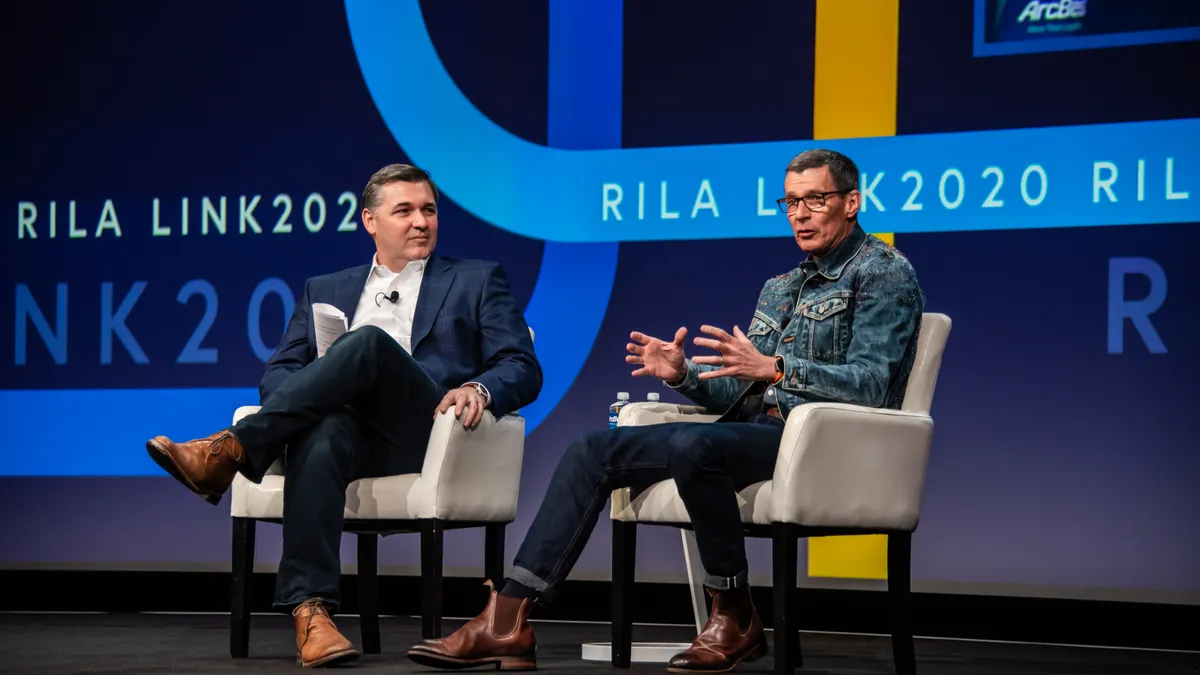Dive Brief:
- Levi's efforts to reduce production in China due to tariffs are cause for cautious optimism as the novel coronavirus, COVID-19, hits supply chains around the globe, Levi's CEO Chip Bergh told supply chain managers at the Retail Industry Leaders Association (RILA) conference on Feb. 25.
- "I would say relative to a lot of the industry, we are hedged in China more than a lot of our peers," Bergh said at the event. "China tends to be on the high end ... but still it's not no it's not 80 or 90% of our total."
- The company reduced its manufacturing in China from 16% in 2017 to between 1% and 2% in 2019, according to a Reuters report. Bergh said the move has shielded the company from coronavirus disruption despite ongoing store closures.
Dive Insight:
"The third party vendors that we're working with in China are mostly back up and running," Bergh said. "I don't think any of them are at full capacity right now. I would say we're averaging around 70% or 75%, there's probably going to be a little bit of a short term head in terms of deliveries."
China represents 3% of Levi's revenue, according to Bergh. As of its most recent earnings call, the company has closed over 500 stores there, he said.
The company is also keeping an eye on the virus' spread to Europe where it could affect another key segment of its production and supply base, Bergh said.
"We really know that it's a very fluid, very dynamic situation. Nobody really knows when this is going to wind down," he said.
Amid these challenges, Levi's has been working on a broad turnaround of its e-commerce and omnichannel approach after a supply chain overhaul in 2018.
"When I joined the company, we had three people working on e-commerce full-time globally," Bergh said. "we had outsourced everything, front end, back end, most of the most of the day to day stuff ... Today, that team on a global basis has over 100 people. We own our front end in almost every single market."
Back end operations and fulfillment remain largely third-party run, but the company is working on optimizing its fulfillment approach to serve multiple sales channels, he said.
"Obviously, fulfillment and the returns part of it is a big economic impact on the P&L. We make more money selling to our consumers via Amazon or pure players like Macy's or Kohl's.com," he said. In spite of that, the company is still working on enhancements to improve its internal e-commerce fulfillment going forward to cut down on costs and improve profitability.
Despite coronavirus, global trade and delivery concerns in the first quarter of 2020, Bergh said he believes the company's e-commerce division will break even this year due to investments in streamlining front and back-end operations and reducing costs.















